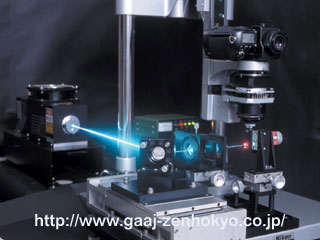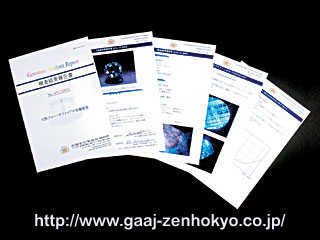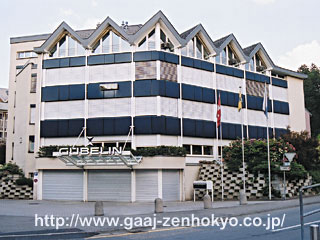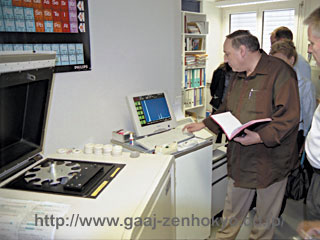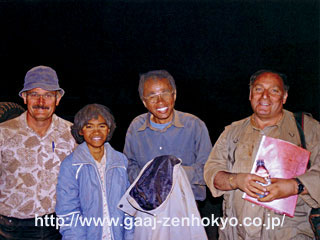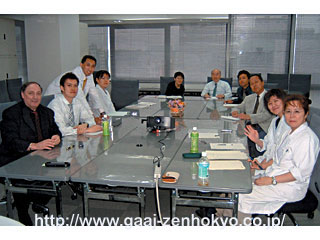|
||||||||||||||||||||||||
With awareness of the importance of scientific gem identification, Gemmological Association of All Japan (GAAJ) set out a research laboratory soon after the association was established, and since then it has been continuing studies on various gemmological subjects for decades. The outcomes of the researches were not only utilised for routine identification work, but also reported at domestic and international academic conferences. We are confident that our reports have contributed to sound development of the industry at least to a certain extent. However, importance of exchanging information between domestic and international laboratories attracts new understanding of the gem industry due to increasing background information that is inevitable to gemmological laboratories in recent years, for instance, appearance of new varieties and new origins, or development of synthetic and treated stones. The research laboratory of GAAJ has established cooperative relationship with major gemmological laboratories overseas through International Gemmological Conference *1 and Laboratory Manual Harmonisation Committee (LMHC)*2. With Gübelin Gem Lab (GGL) in Switzerland, we have launched a collaborative research project on locality identification of various gemstones which tend to cause a subtle difference in identification results among international laboratories, and on problems of detection of heating / non-heating in corundum (ruby and sapphire). ♦ Accuracy and Limitation of Geographic Origin Determination Gem identification report is commonly known as a means to express properties and features of gemstones set in jewellery. On the reports, gemmological properties possessed by each gemstone are described, including its natural or synthetic origin as well as mineral species, variety name and possible artificial treatment on the gemstone. As an option on customerfs request, determination of geographical origin of the gemstone so called gOrigin Determinationh may be made. (Domestic regulations do not approve description of origin on a general gem identification report and it should be stated on a gem analysis report.) To achieve accurate identification on these subjects, more sophisticated analytical instruments are required if necessary as well as standard gemmological identification technique. Also, to improve the precision of identification results, knowledge and experienced accumulated for long years, massive database possessed by the lab and a criterion for consistency are required. Particularly, origin determination of a gemstone has to restrict the geographical area from where each gemstone has occurred, so that it needs background of a gemstone to determine geological environment and global tectonics from which the gemstone has been derived. To meet the requirement, collecting specimens of clearly known locality is essential, and the abundant specimens must be reliably divided by each locality. The detailed internal observation and standard gemmological properties must be obtained first to create a database. In addition, UV-Visible spectrophotometry, infrared spectrophotometry (FTIR), Raman micro spectrometry analysis, fluorescent X-ray analysis and eventually analysis on trace and ultra-trace elements by LA- ICP-MS are operated to identify them by specialists who have knowledge and experiences on crystal growth of minerals, formation of rocks and plate tectonics.
It is noted that the result of origin determination must be regarded as an opinion of a laboratory that testes a particular gemstone, and it is not what to be proved, and so that the described origin never indicates any quality and value of the gemstone. The origin results is drawn from comparison with massive specimens with known localities and with database, from results of continuous research to date and from reference information, and the most possible origin of the gemstone tested is described on a report. There is rarely a case that some origins of a certain gem variety show quite similar properties and specific origin cannot be determined. There is also possibility that description of new origin with less information at early stage may cause time-lag. Gübelin Gem Lab (GGL) is one of international gem labs which are the most trusted as pioneer of geographic origin determination on gemstones. Prof., Dr. Eduard J. Gübelin, the father of gemmology, has largely contributed to todayfs gemmology by collecting abundant gem samples from all over the world, observing and describing detailed internal features of them and developing instruments to measure gemmological properties of gemstones. Unfortunately we heard news of the passing of the great gemmologist this year, however, his confident and spirit have been passed to the internationally recognised expert gemmologists including Dr. Dietmar Schwarz.
Research laboratory of GAAJ introduced LA-ICP-MS (Laser Ablation-Inductively Coupled Plasma Mass Spectrometry) first in the world gem labs and demonstrated that its analytical results were very effective for origin determination of gemstones. In particular, accuracy of distinction between blue sapphires from Sri Lanka, Myanmar and from Madagascar, which used to be a difficult task, shows a great improvement. Currently we are working on collaborative research continuously with GGL about origin determination of rubies (from Kashmir, Afghanistan and Pakistan), emeralds (from Zambia, Colombia, Pakistan, Zimbabwe and Nigeria) to improve the accuracy of the results. On the project, GGL generously supplied many samples whose origins have been already known.
|
||||||||||||||||||||||||
|
